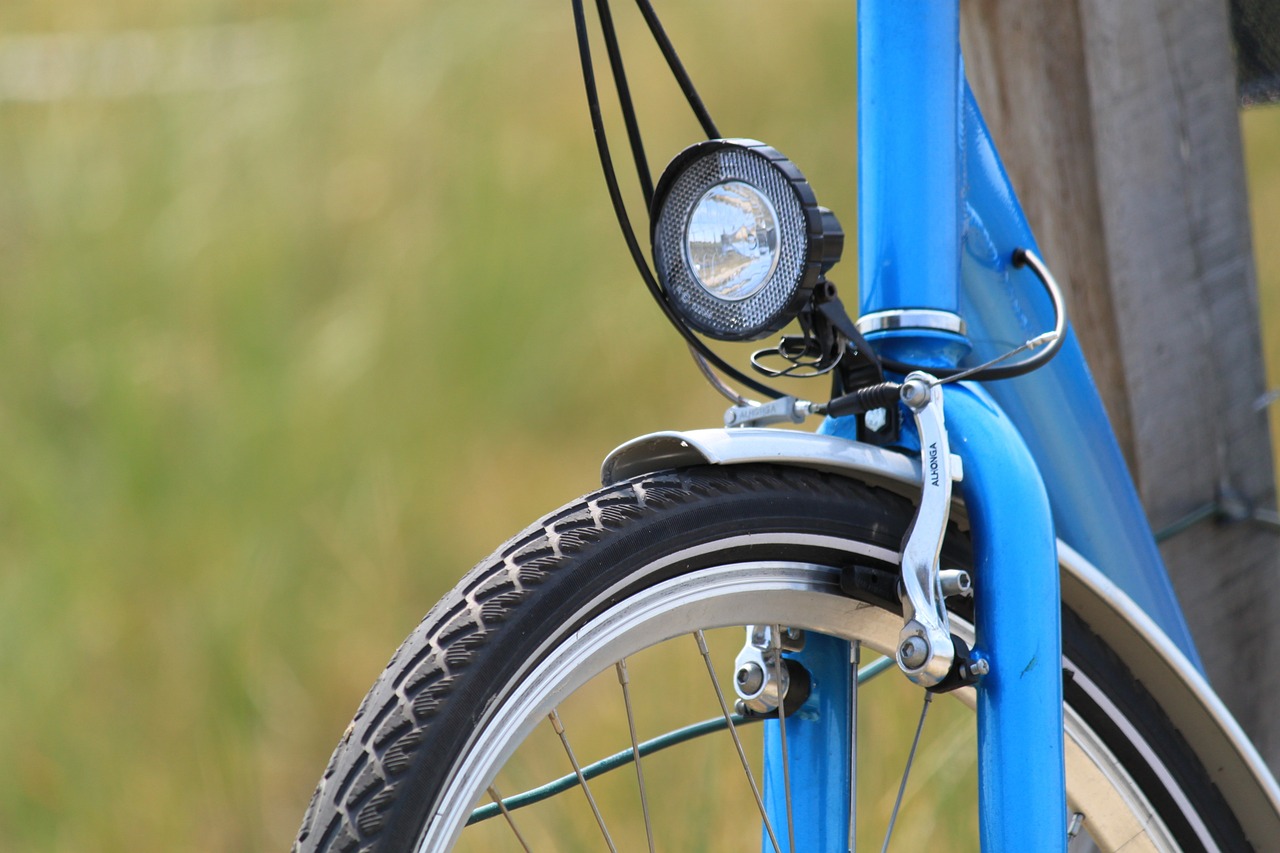The Honda Accord is known for its reliability and comfort, but many owners often wonder about the specifics of its cabin air filtration system. One common question is whether the Honda Accord features two cabin filters. In this article, we will delve into the details of cabin filters, their functions, and maintenance tips, as well as the significance of ensuring clean air circulation within your vehicle.
A cabin filter serves a critical role in your vehicle’s heating, ventilation, and air conditioning (HVAC) system. It filters out dust, pollen, and other airborne particles from the air that enters the cabin, providing a healthier environment for passengers while driving.
Most Honda Accord models are equipped with one cabin filter. However, certain trims and model years may feature a dual-filter system, which enhances air quality by providing additional filtration. To determine the specific setup in your vehicle, consult the owner’s manual or contact your local dealership.
Locating the cabin filter in your Honda Accord is relatively simple. It is typically found behind the glove compartment. To access it, you may need to remove a few screws and gently lower the glove box.
Recognizing the signs of a clogged cabin filter is crucial for maintaining air quality. Common symptoms include:
- Reduced airflow from the vents
- Unpleasant odors inside the cabin
- Increased dust accumulation on surfaces
For optimal performance, it is recommended to replace your cabin filter every 15,000 to 30,000 miles. However, this interval may vary based on driving conditions, such as frequent travel through dusty areas or heavy traffic.
A clean cabin filter is essential for:
- Improving air quality by filtering out allergens and pollutants
- Enhancing HVAC efficiency
- Providing a more pleasant driving experience
Yes, replacing the cabin filter is a do-it-yourself task that can save you money. With minimal tools and about 30 minutes of time, you can complete the replacement process.
To replace the cabin filter, you will need:
- A screwdriver
- A flashlight (optional, for better visibility)
Replacement cabin filters can be easily found at auto parts stores, online retailers, or directly from Honda dealerships. Ensure you select the correct filter compatible with your specific model.
The cost for a cabin filter replacement typically ranges from $15 to $50 for the filter itself. If you choose to have it replaced at a shop, additional labor costs may apply.
Failing to replace your cabin filter can lead to poor air quality, increased allergens, and potential damage to your vehicle’s HVAC system due to restricted airflow.
Indeed, there are upgraded cabin filters available, such as HEPA filters, which provide superior filtration. These can be particularly beneficial for allergy sufferers or those living in areas with high pollution levels.
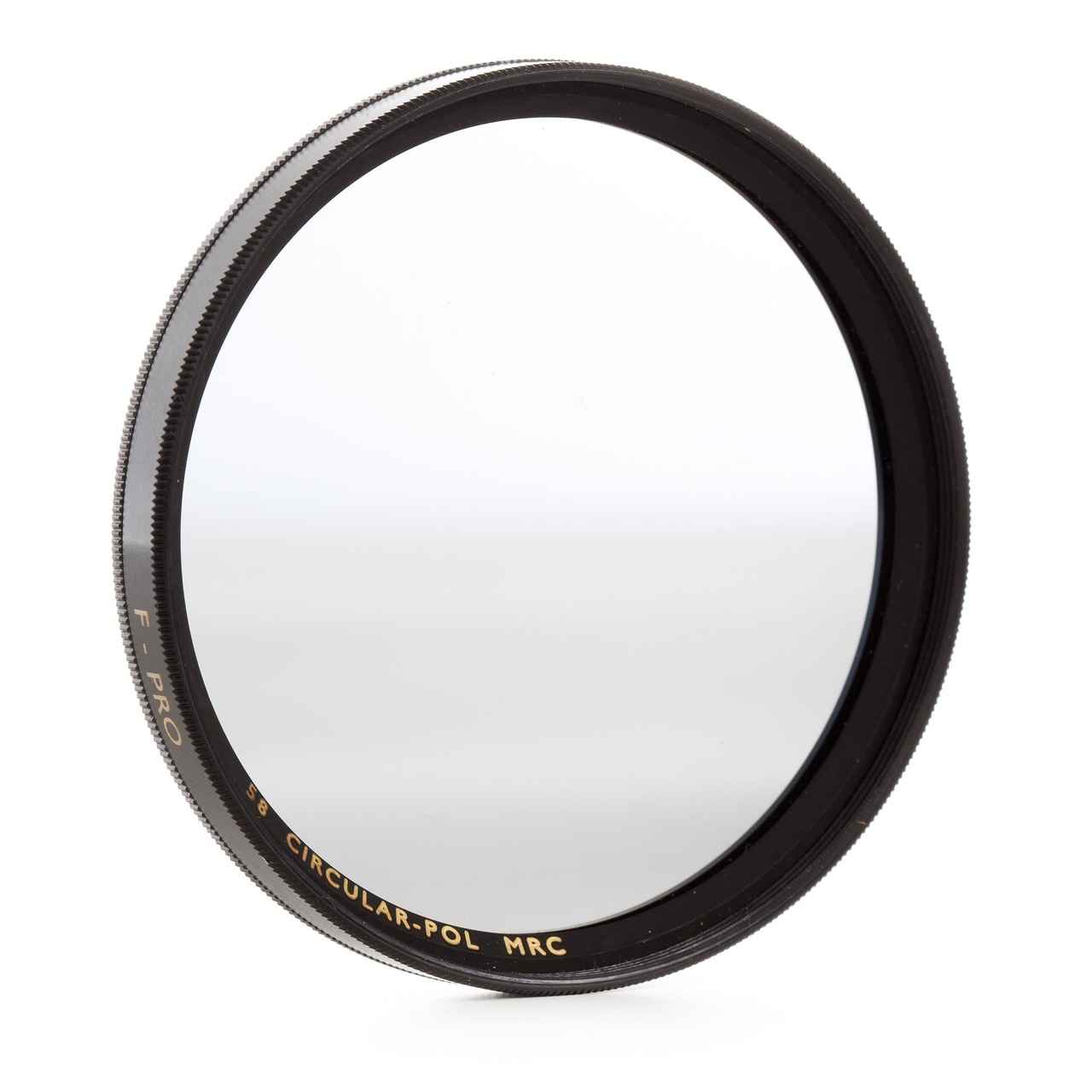
What is a Cabin Filter?
A cabin filter plays a vital role in your vehicle’s HVAC (Heating, Ventilation, and Air Conditioning) system. It acts as a barrier, filtering out dust, pollen, and other airborne contaminants before they enter the cabin. This ensures that the air you breathe while driving is clean and free from pollutants. In essence, a cabin filter is essential for maintaining a healthy driving environment.
Cabin filters are particularly important for individuals who suffer from allergies or respiratory issues, as they help to minimize exposure to allergens. The presence of a functioning cabin filter can significantly enhance your overall driving experience by providing fresh air and reducing unpleasant odors that can accumulate over time.
Most modern vehicles, including the Honda Accord, are equipped with cabin filters. These filters are designed to be easily accessible for maintenance, allowing you to replace them without professional assistance. Regular replacement is key to ensuring optimal air quality and performance of your vehicle’s HVAC system.
In addition to improving air quality, a clean cabin filter can also contribute to the efficiency of your vehicle’s heating and cooling systems. When the filter is clogged, it can restrict airflow, making the HVAC system work harder and potentially leading to increased fuel consumption. This is why it is recommended to check and replace your cabin filter regularly, typically every 15,000 to 30,000 miles, though this can vary based on driving conditions and personal preferences.
When considering the type of cabin filter to use, it’s important to note that there are various options available on the market. Standard filters are designed to capture larger particles, while premium options, such as HEPA filters, can trap smaller allergens and pollutants, providing an even higher level of air purification. This can be especially beneficial for those living in urban areas with high levels of air pollution.
In summary, a cabin filter is not just a simple accessory; it is a crucial component for ensuring a comfortable and healthy driving experience. By understanding its function and maintaining it properly, you can enjoy cleaner air and enhance the efficiency of your vehicle’s HVAC system.
- Key Functions of a Cabin Filter:
- Filters out dust and pollen
- Reduces odors
- Improves HVAC efficiency
- Signs of a Clogged Cabin Filter:
- Reduced airflow from vents
- Unpleasant smells inside the vehicle
- Increased dust accumulation on interior surfaces
- Maintenance Tips:
- Check the cabin filter every few months
- Replace it as recommended (15,000 to 30,000 miles)
- Consider upgrading to a HEPA filter for better filtration
In conclusion, understanding the significance of your cabin filter and maintaining it properly can lead to a more enjoyable driving experience. Whether you’re commuting to work or embarking on a road trip, clean air is essential for your comfort and well-being.

Does the Honda Accord Have One or Two Cabin Filters?
The Honda Accord is a popular choice among drivers for its reliability and comfort. One of the often-overlooked components of this vehicle is the cabin filter, which plays a vital role in maintaining air quality inside the car. In this article, we will explore whether the Honda Accord has one or two cabin filters, their importance, and how to maintain them effectively.
Most Honda Accord models are equipped with one cabin filter, which is designed to filter out dust, pollen, and other airborne particles from entering the vehicle’s interior. However, certain trims and model years may feature a dual-filter system that enhances air quality even further. This dual system can be particularly beneficial for those who frequently drive in urban areas with high pollution levels or for allergy sufferers.
The presence of one or two cabin filters can depend on various factors, including the specific model year and trim level. For example, higher trims or newer models may have upgraded filtration systems to provide better air quality and comfort for passengers. If you’re unsure about your specific model, consulting your owner’s manual or contacting a Honda dealership can provide clarity.
The cabin filter is an essential component of your vehicle’s heating, ventilation, and air conditioning (HVAC) system. It serves to:
- Improve Air Quality: By filtering out allergens and pollutants, the cabin filter helps maintain a healthier environment inside the vehicle.
- Enhance HVAC Efficiency: A clean filter allows the HVAC system to operate more efficiently, ensuring that your car heats and cools effectively.
- Prevent Unpleasant Odors: A clogged or dirty filter can lead to musty smells inside the cabin, detracting from your driving experience.
Finding the cabin filter in your Honda Accord is relatively easy. It is typically located behind the glove compartment. To access it:
1. Open the glove compartment and remove any contents.2. Gently push in on the sides of the glove compartment to release it from its hinges.3. Locate the cabin filter cover, which is usually secured with clips or screws.4. Remove the cover to access the cabin filter.
Being aware of the signs of a clogged cabin filter can help you maintain optimal air quality. Common symptoms include:
- Reduced Airflow: If you notice a decrease in airflow from the vents, it may indicate that the filter is clogged.
- Unpleasant Odors: A musty or foul smell can signify that the filter is dirty and needs replacement.
- Increased Dust Accumulation: If you find more dust inside your vehicle, it could be due to a failing cabin filter.
Regular maintenance of your cabin filter is crucial for ensuring clean air inside your vehicle. It is generally recommended to replace the cabin filter every 15,000 to 30,000 miles, but this can vary based on driving conditions and personal preference. If you frequently drive in heavy traffic or rural areas with lots of dust, you may want to consider replacing it more often.
Yes, replacing the cabin filter is a straightforward DIY task that can save you money on labor costs. With just a few basic tools, you can complete the replacement in under 30 minutes. This not only improves air quality but also gives you a sense of accomplishment.
Replacement cabin filters are widely available at auto parts stores, online retailers, and directly from Honda dealerships. When purchasing a replacement, ensure it is compatible with your specific Honda Accord model to guarantee a proper fit.
Neglecting to replace a clogged cabin filter can lead to several issues, including:
- Poor Air Quality: Increased allergens and pollutants can make the driving experience uncomfortable.
- HVAC System Strain: A clogged filter can put extra strain on the HVAC system, potentially leading to costly repairs.
In conclusion, understanding whether your Honda Accord has one or two cabin filters is essential for maintaining air quality and ensuring a comfortable driving experience. Regular maintenance and timely replacement of the cabin filter can significantly enhance your vehicle’s performance and your overall comfort.

How to Locate the Cabin Filter in Your Honda Accord?
Locating the cabin filter in your Honda Accord is a straightforward process that can save you time and money. Understanding where this essential component is located is key to maintaining your vehicle’s air quality. The cabin filter plays a crucial role in filtering out dust, pollen, and other airborne particles, ensuring a comfortable driving experience.
In most Honda Accord models, the cabin filter is typically found behind the glove compartment. This location is designed for easy access, allowing you to perform maintenance without the need for extensive tools or technical expertise.
- Open the Glove Compartment: Start by emptying the glove compartment of any items to ensure you have a clear workspace.
- Remove the Damper Arm: You may notice a damper arm on the right side of the glove compartment. Gently detach it to allow the compartment to swing down fully.
- Unclip the Glove Compartment: Locate the clips on either side of the glove compartment. Squeeze them together to release the compartment from its housing.
- Locate the Cabin Filter Cover: Once the glove compartment is out of the way, you will see the cabin filter cover. It is usually a rectangular panel that may require unfastening clips or screws.
- Remove the Cabin Filter: After accessing the cover, carefully pull out the old cabin filter. Pay attention to its orientation for proper installation of the new filter.
Regularly checking and replacing your cabin filter is essential for maintaining optimal air quality inside your vehicle. A clogged or dirty filter can significantly reduce airflow, leading to a less comfortable driving experience. Additionally, it can strain your vehicle’s HVAC system, potentially leading to costly repairs.
When replacing your cabin filter, consider the following tips:
- Choose the Right Filter: Ensure you purchase a filter that is compatible with your specific Honda Accord model. You can find this information in your owner’s manual or consult with an auto parts store.
- Follow Installation Instructions: Refer to the instructions provided with your new filter for the correct installation procedure. This will help you avoid any mistakes that could affect performance.
- Consider Upgraded Filters: If you suffer from allergies or live in a heavily polluted area, consider upgrading to a HEPA filter for superior air quality.
It is generally recommended to check your cabin filter every 15,000 to 30,000 miles. However, if you frequently drive in dusty conditions or have allergies, more frequent checks may be beneficial.
By understanding how to locate and maintain your cabin filter, you can ensure that your Honda Accord provides clean and comfortable air for you and your passengers. Regular maintenance not only enhances your driving experience but also contributes to the longevity of your vehicle’s HVAC system.

What Are the Signs of a Clogged Cabin Filter?
Understanding the signs of a clogged cabin filter is crucial for maintaining a comfortable and healthy driving environment in your vehicle. The cabin filter plays a vital role in filtering out pollutants, dust, and allergens from the air that enters your car’s interior. When this filter becomes clogged, it can lead to various symptoms that indicate the need for immediate attention.
- Reduced Airflow: One of the most noticeable signs of a clogged cabin filter is a significant decrease in airflow through the vents. If you find that the air is not coming out as forcefully as it used to, it may be time to check the cabin filter.
- Unpleasant Odors: A clogged filter can trap moisture and debris, leading to musty or unpleasant smells inside the vehicle. If you detect strange odors when using the air conditioning or heating system, this could indicate a problem with the cabin filter.
- Increased Dust Accumulation: If you notice more dust settling inside your vehicle than usual, it may be a sign that the cabin filter is no longer effectively filtering the air. A dirty filter allows dust and other particles to circulate within the cabin.
- Allergic Reactions: For those who suffer from allergies, a clogged cabin filter can exacerbate symptoms. If you find yourself sneezing or experiencing more allergy-related issues while driving, it could be due to a buildup of allergens in the cabin air.
- Frequent HVAC System Issues: If your heating, ventilation, and air conditioning (HVAC) system is frequently malfunctioning or making unusual noises, a clogged cabin filter may be restricting airflow and putting extra strain on the system.
It is essential to address these symptoms promptly to ensure a safe and comfortable driving experience. Ignoring the signs of a clogged cabin filter can lead to further complications, including damage to the HVAC system and poor air quality.
To maintain optimal performance, it is recommended to check your cabin filter regularly, especially if you frequently drive in dusty or polluted environments. Replacing the cabin filter every 15,000 to 30,000 miles is generally advised, but you should consult your vehicle’s manual for specific recommendations.
In summary, being aware of the signs of a clogged cabin filter can help you take proactive measures to ensure a clean and healthy atmosphere inside your vehicle. Regular maintenance not only enhances your driving comfort but also contributes to the longevity of your vehicle’s HVAC system.
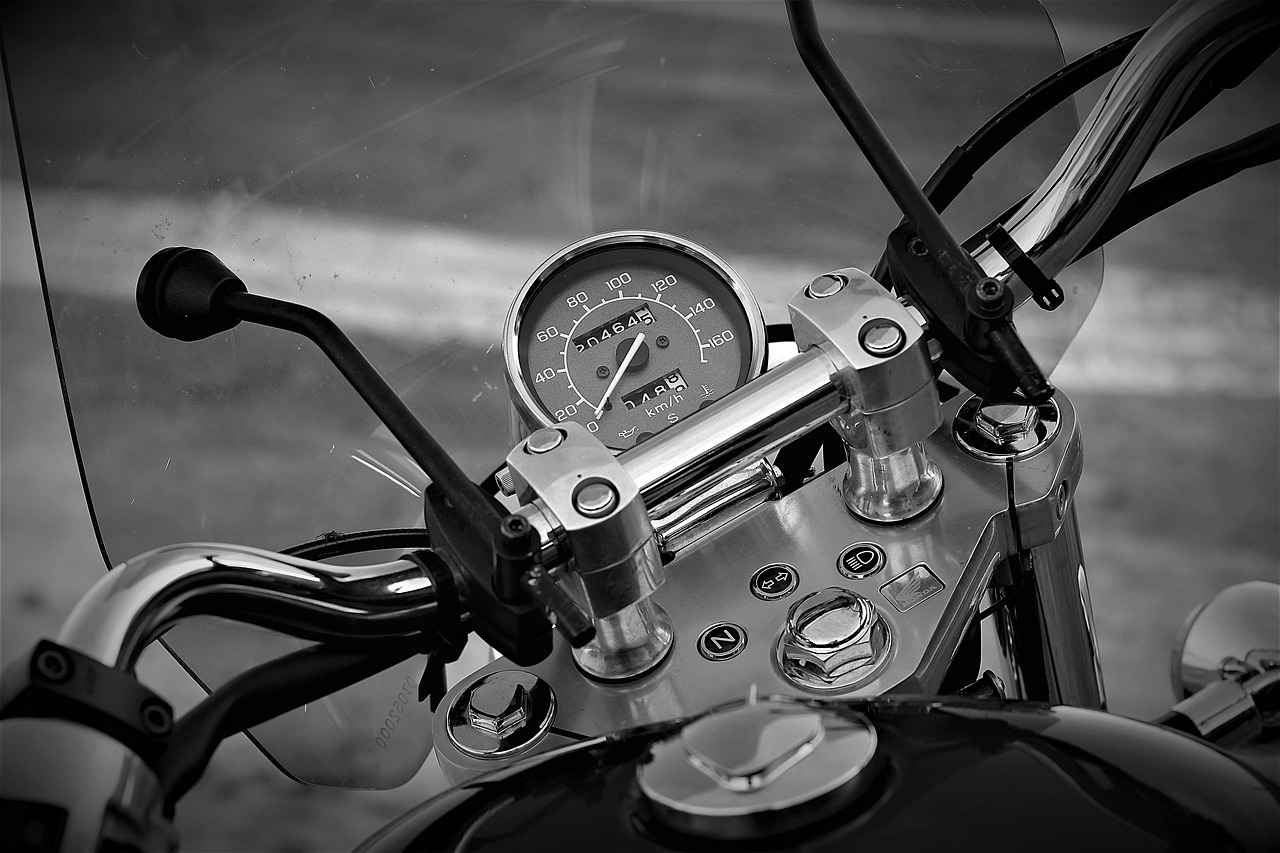
How Often Should You Replace Your Cabin Filter?
Maintaining the air quality inside your vehicle is essential for both comfort and health. One key component in achieving this is the cabin filter. This question is vital for ensuring that your vehicle’s HVAC system operates efficiently and that you breathe clean air while driving.
The cabin filter plays a crucial role by filtering out dust, pollen, and other airborne contaminants that can enter your vehicle. If you neglect to replace it regularly, you may experience a range of issues, including:
- Reduced Airflow: A clogged filter can restrict airflow, making it hard for the HVAC system to circulate air effectively.
- Unpleasant Odors: A dirty filter can harbor mold and bacteria, leading to foul smells inside the cabin.
- Increased Allergens: A compromised filter allows allergens to circulate, which can affect passengers with allergies or respiratory issues.
It is generally recommended to replace your cabin filter every 15,000 to 30,000 miles. However, the exact interval can vary based on several factors:
- Driving Conditions: If you frequently drive in urban areas with heavy traffic or on unpaved roads, you may need to replace your cabin filter more often.
- Seasonal Changes: During pollen season or in areas with high pollution, consider checking your filter more frequently.
- Vehicle Usage: If you use your vehicle for long commutes or as a work vehicle, you may find that your filter needs replacing sooner.
Besides the mileage recommendation, there are other signs that indicate your cabin filter may need replacing:
- Decreased Airflow: If you notice that the air is not blowing as strongly as it used to, this could be a sign of a clogged filter.
- Strange Noises: Unusual sounds from the HVAC system can indicate that the filter is obstructing airflow.
- Frequent Sneezing or Allergies: If you or your passengers experience increased allergy symptoms while driving, it may be time to check the filter.
Replacing your cabin filter is a straightforward task that many vehicle owners can do themselves. It typically requires only basic tools and can be completed in under 30 minutes. However, if you’re unsure or uncomfortable performing the task, seeking professional help is always a good option.
Replacement cabin filters can be easily found at:
- Auto Parts Stores: Most local auto parts retailers stock cabin filters for various makes and models.
- Online Retailers: Websites like Amazon and specialized automotive sites offer a wide range of options.
- Honda Dealerships: For OEM (Original Equipment Manufacturer) parts, your local Honda dealership is a reliable source.
The cost of a cabin filter can vary widely, typically ranging from $15 to $50 depending on the brand and type. If you choose to have it replaced at a service center, labor costs may add an additional fee.
In summary, regular replacement of your cabin filter is essential for maintaining good air quality and ensuring the efficient operation of your vehicle’s HVAC system. By keeping an eye on the recommended mileage and being aware of the signs of a clogged filter, you can enjoy a healthier driving environment.
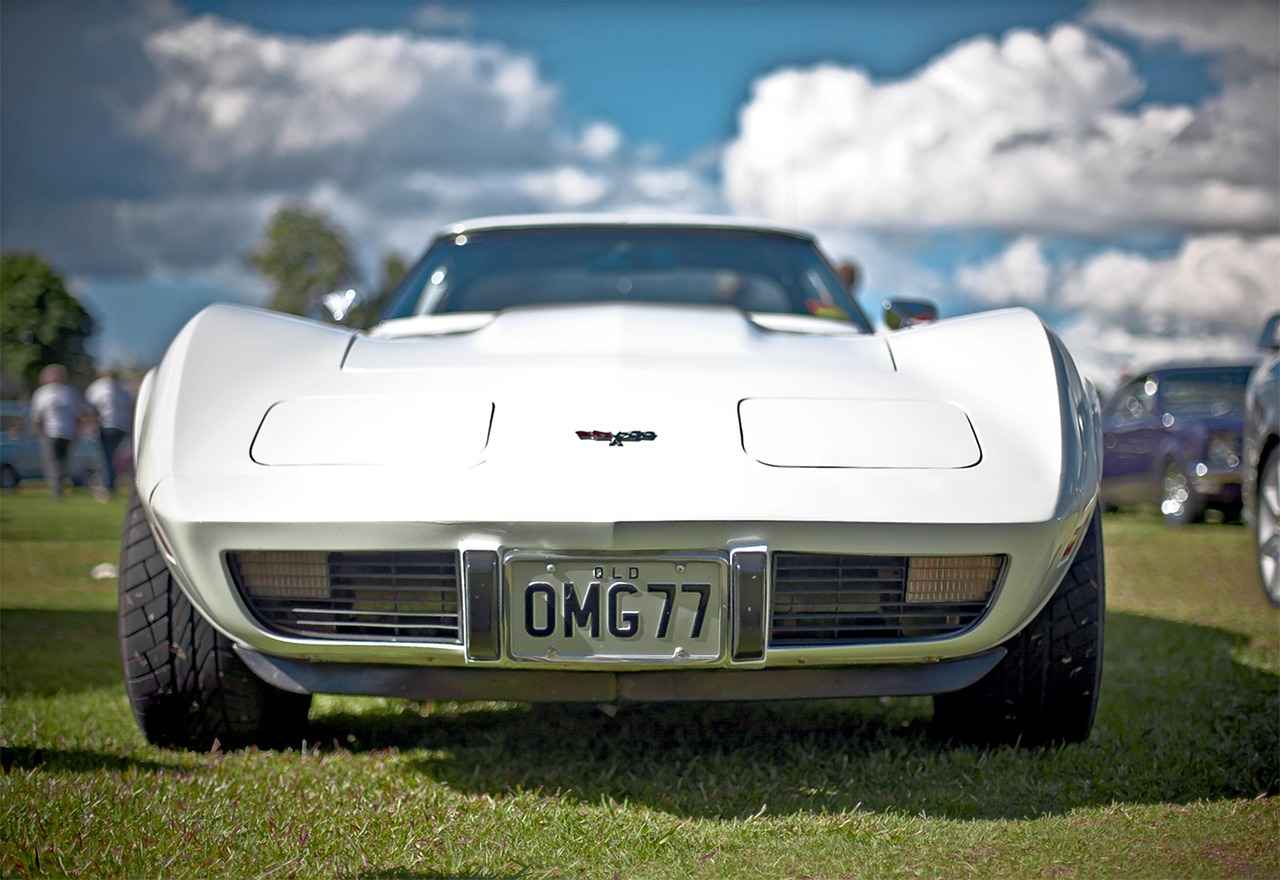
What Are the Benefits of a Clean Cabin Filter?
A clean cabin filter is essential for maintaining a healthy and comfortable environment inside your vehicle. Understanding the benefits of a clean cabin filter can help you appreciate its role in your driving experience.
One of the primary benefits of a clean cabin filter is enhanced air quality. The cabin filter acts as a barrier against dust, pollen, and other airborne contaminants. By effectively filtering out these allergens, it helps to reduce the risk of respiratory issues and allergies for both the driver and passengers. A clean filter ensures that the air circulating within the cabin is free from harmful particles, providing a healthier environment.
A clean cabin filter significantly contributes to the efficiency of your vehicle’s HVAC system. When the filter is clogged with dirt and debris, it restricts airflow, forcing the HVAC system to work harder to maintain the desired temperature. This increased strain can lead to higher fuel consumption and potential HVAC system failures. Regularly replacing the cabin filter ensures optimal airflow, allowing the HVAC system to operate efficiently and effectively.
Driving should be an enjoyable experience, and a clean cabin filter plays a crucial role in achieving this. By filtering out unpleasant odors and pollutants, it creates a more pleasant driving environment. Whether you’re navigating through city traffic or cruising on the highway, a fresh and clean cabin can make all the difference in your overall comfort.
A clean cabin filter can also help reduce noise levels within the vehicle. When the filter is clogged, the HVAC system has to work harder, which can lead to increased operational noise. By maintaining a clean filter, you can enjoy a quieter ride, allowing for a more relaxing atmosphere while driving.
Regular maintenance of your cabin filter can contribute to the longevity of your vehicle’s HVAC components. A clean filter reduces the workload on the system, minimizing wear and tear on essential parts such as the blower motor and evaporator. This proactive approach can save you money on costly repairs down the line.
Replacing your cabin filter is a cost-effective maintenance task that can yield significant benefits. Cabin filters are relatively inexpensive, and replacing them regularly can prevent more extensive and costly repairs to your HVAC system. It’s a small investment that pays off in terms of improved air quality and system efficiency.
In summary, the benefits of a clean cabin filter extend beyond just air quality. It enhances HVAC efficiency, creates a more pleasant driving experience, reduces noise levels, increases the lifespan of HVAC components, and is a cost-effective maintenance practice. By prioritizing the cleanliness of your cabin filter, you ensure a healthier and more enjoyable driving experience for everyone in your vehicle.

Can You Replace the Cabin Filter Yourself?
When it comes to maintaining your Honda Accord, one of the simplest yet most effective tasks you can undertake is replacing the cabin filter. This component plays a vital role in ensuring that the air you breathe inside your vehicle is clean and free from pollutants. In this section, we will explore the practicality of replacing the cabin filter yourself and the benefits of doing so.
Yes, replacing the cabin filter is not only feasible but also a rewarding DIY task that can save you money. Many car owners may be intimidated by the idea of performing maintenance on their vehicles, but changing the cabin filter is relatively straightforward. With just a few basic tools and some guidance, you can complete this task in under 30 minutes.
The cabin filter is essential for maintaining optimal air quality within your vehicle. Over time, filters can become clogged with dust, pollen, and other contaminants, leading to reduced airflow and unpleasant odors. By replacing the cabin filter, you enhance the efficiency of your HVAC system and ensure a more comfortable driving experience.
To successfully replace your cabin filter, you will need:
- A screwdriver – Typically a Phillips head will suffice.
- A flashlight – This will help illuminate the area behind the glove compartment.
- A new cabin filter – Ensure it is compatible with your Honda Accord model.
1. Start by opening the glove compartment and removing any items inside.2. Locate the stops on either side of the glove compartment and gently push them inward to allow the compartment to drop down.3. Look for the cabin filter cover, which is usually a rectangular panel.4. Remove the cover by unclipping or unscrewing it, depending on your model.5. Take out the old cabin filter, noting its orientation for correct installation of the new one.6. Insert the new cabin filter, ensuring it matches the airflow direction indicated on the filter.7. Reattach the cover and lift the glove compartment back into place.8. Close the glove compartment and dispose of the old filter properly.
Being aware of the signs that indicate a clogged cabin filter can save you from discomfort during your drives. Look out for:
- Reduced airflow from the vents.
- Unpleasant odors when the HVAC system is running.
- Increased dust accumulation inside your vehicle.
It is generally recommended to replace your cabin filter every 15,000 to 30,000 miles, but this can vary based on your driving conditions. Frequent driving in dusty or polluted environments might necessitate more regular changes.
By taking the initiative to replace your cabin filter yourself, you not only save on labor costs but also gain a sense of accomplishment. Regular maintenance like this can lead to better air quality and a more enjoyable driving experience. So, gather your tools, follow the steps outlined, and enjoy the benefits of clean air in your Honda Accord.

What Tools Do You Need for Cabin Filter Replacement?
When it comes to maintaining the air quality in your Honda Accord, replacing the cabin filter is an essential task that every car owner should consider. Understanding the tools needed for this process can make the job easier and more efficient. Below, we outline the necessary tools and some tips to help you successfully replace your cabin filter.
For cabin filter replacement, you will need a few basic tools. Here’s a detailed list:
- Screwdriver: A flathead or Phillips screwdriver is typically required to remove the screws holding the glove compartment in place. Make sure to have the right size to avoid damaging the screws.
- Flashlight: A flashlight can be incredibly helpful for illuminating the filter compartment, especially in low-light conditions. It allows you to see clearly and ensures you don’t miss any hidden screws or clips.
- Pliers: Sometimes, you may need pliers to help pull out the old filter or to manipulate any clips that are holding it in place.
- Vacuum Cleaner: While this isn’t a tool for the actual replacement, having a vacuum handy can help you clean out any debris that may have accumulated in the filter compartment.
- Replacement Cabin Filter: Ensure you have the correct replacement filter for your specific Honda Accord model. Check your owner’s manual or consult with an auto parts store for compatibility.
Once you have gathered these tools, you can proceed with the replacement process. Here’s a quick overview of the steps involved:
- Prepare Your Vehicle: Park your Honda Accord on a level surface and turn off the engine. It’s also a good idea to disconnect the battery to avoid any electrical issues.
- Remove the Glove Compartment: Use the screwdriver to take out the screws and carefully lower the glove compartment. Be gentle to avoid breaking any clips.
- Locate the Cabin Filter: The cabin filter is usually located behind the glove compartment. Use the flashlight to find the exact position.
- Replace the Filter: Remove the old filter and clean the area if necessary. Insert the new filter, ensuring it is oriented correctly.
- Reassemble the Glove Compartment: Once the new filter is in place, reattach the glove compartment and secure it with screws.
By using the right tools and following these steps, you can easily replace your cabin filter and improve the air quality in your vehicle. Regular maintenance of your cabin filter not only enhances your driving experience but also contributes to the longevity of your car’s HVAC system.
In summary, having the right tools at your disposal is crucial for a successful cabin filter replacement. With just a screwdriver, flashlight, and a few other items, you can perform this DIY task efficiently. Remember, maintaining clean air circulation in your Honda Accord is not just about comfort; it’s about health and safety.

Where Can You Purchase a Replacement Cabin Filter?
When it comes to maintaining your Honda Accord, one essential component that often gets overlooked is the cabin filter. This filter plays a crucial role in ensuring that the air you breathe inside your vehicle is clean and free from pollutants. If it’s time to replace your cabin filter, you may be wondering where to purchase a replacement. In this article, we will explore the various options available for obtaining a new cabin filter for your Honda Accord.
Replacement cabin filters can be found in several locations, making it convenient for Honda Accord owners to find the right fit for their vehicle. Here are the main options:
- Auto Parts Stores: Local auto parts stores, such as AutoZone, O’Reilly Auto Parts, or Advance Auto Parts, typically stock a variety of cabin filters. These stores often have knowledgeable staff who can assist you in selecting the correct filter for your specific model and year.
- Online Retailers: Websites like Amazon, eBay, and specialized automotive parts retailers offer a vast selection of cabin filters. Shopping online allows you to compare prices, read customer reviews, and find filters that meet your needs. Be sure to verify compatibility with your Honda Accord before making a purchase.
- Honda Dealerships: For those who prefer OEM (Original Equipment Manufacturer) parts, visiting a Honda dealership is an excellent option. Dealerships offer cabin filters specifically designed for Honda vehicles, ensuring a perfect fit. While this option may be more expensive than aftermarket filters, it provides peace of mind regarding quality and compatibility.
- Big-Box Retailers: Stores like Walmart or Costco may also carry cabin filters in their automotive sections. These retailers often provide competitive pricing, making them a viable choice for budget-conscious consumers.
Regardless of where you choose to purchase your replacement cabin filter, it’s essential to ensure that you are getting the correct part for your Honda Accord. Always check the specifications and compatibility information before finalizing your purchase.
Selecting the right cabin filter is crucial for maintaining optimal air quality and HVAC performance in your vehicle. A filter that does not fit properly can lead to reduced airflow, allowing dust and allergens to enter the cabin. Additionally, an incorrect filter may not effectively trap pollutants, leading to unpleasant odors and decreased comfort during your drive.
In conclusion, whether you opt for a local auto parts store, an online retailer, or a Honda dealership, there are plenty of options available for purchasing a replacement cabin filter for your Honda Accord. By ensuring you choose the correct filter, you can maintain a clean and comfortable driving environment.
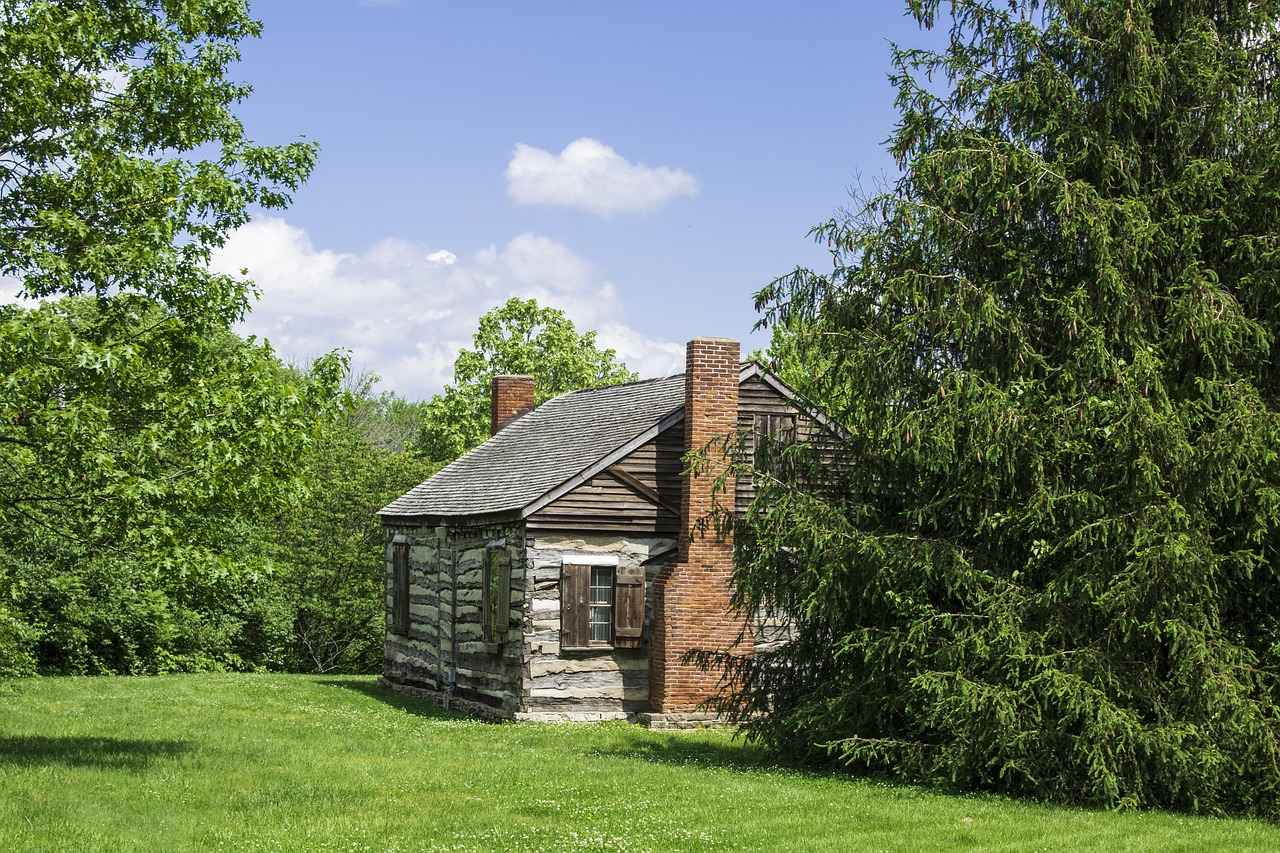
How Much Does a Cabin Filter Replacement Cost?
The cost of replacing a cabin filter is an important consideration for vehicle maintenance. Understanding the financial aspect can help you plan better for this necessary service. Generally, the price for a cabin filter itself can range from $15 to $50, depending on the make and model of your vehicle, as well as the type of filter you choose. However, this cost can vary based on several factors.
When you opt for a replacement at an auto shop, you should also factor in labor costs. Labor charges can vary widely, typically ranging from $50 to $100 per hour. The entire process of replacing a cabin filter usually takes about 30 minutes to an hour, which means you could be looking at a total cost of $65 to $150 when including both parts and labor.
Here are some factors that can influence the overall cost of cabin filter replacement:
- Type of Filter: Standard cabin filters are usually less expensive, while premium options like HEPA filters can cost significantly more.
- Vehicle Make and Model: Luxury vehicles or less common models may require more expensive filters.
- Service Location: Prices may vary depending on whether you go to a dealership, an independent shop, or perform the replacement yourself.
For those who prefer to handle maintenance tasks themselves, replacing a cabin filter can be a straightforward DIY project. With minimal tools, such as a screwdriver and possibly a flashlight for visibility, you can save on labor costs. This not only reduces the overall expense but also gives you the satisfaction of performing the task yourself.
Many vehicle owners wonder about the frequency of cabin filter replacement. It is generally advisable to replace your cabin filter every 15,000 to 30,000 miles, depending on driving conditions. If you frequently drive in areas with heavy traffic or pollution, you may need to replace it more often.
In summary, while the cost of a cabin filter replacement can vary, being informed about the factors that influence pricing can help you make better decisions. Whether you choose to replace the filter yourself or have it done professionally, maintaining a clean cabin filter is essential for ensuring good air quality and a comfortable driving experience.

What Happens If You Don’t Replace Your Cabin Filter?
Maintaining your vehicle’s cabin filter is essential for ensuring a healthy and comfortable driving environment. Many drivers may overlook this crucial component, but neglecting to replace your cabin filter can have significant repercussions.
Failing to replace your cabin filter can lead to a variety of issues that affect both your vehicle’s performance and your health. One of the primary consequences is poor air quality inside the cabin. The cabin filter is designed to trap dust, pollen, and other airborne particles, preventing them from entering the vehicle. Over time, a clogged filter can no longer perform this function effectively, allowing allergens and pollutants to circulate freely.
As air quality diminishes, you may notice an increase in allergic reactions or respiratory issues, especially if you or your passengers are sensitive to allergens. Symptoms such as sneezing, coughing, or itchy eyes can become more pronounced, making your driving experience uncomfortable.
In addition to health concerns, a neglected cabin filter can lead to increased strain on your HVAC system. When the filter becomes clogged, it restricts airflow, forcing the heating and air conditioning system to work harder to maintain the desired temperature. This extra effort can lead to premature wear and tear on the system, resulting in costly repairs or even complete failure.
Furthermore, restricted airflow can cause unpleasant odors to develop inside the vehicle. A buildup of moisture and debris in the filter can create a breeding ground for mold and mildew, which can emit foul smells that are hard to eliminate. Regularly changing your cabin filter helps to prevent these odors from taking hold and ensures a fresher atmosphere.
It is generally recommended to replace your cabin filter every 15,000 to 30,000 miles, depending on your driving conditions. If you frequently drive in urban areas with high levels of pollution or in environments with lots of dust, you may need to change it more often. Monitoring the condition of your cabin filter can save you from the negative effects associated with neglect.
How Can You Tell If Your Cabin Filter Needs Replacing? Recognizing the signs of a clogged cabin filter is crucial for maintaining optimal air quality. Some common indicators include:
- Reduced airflow from the vents, even when the HVAC system is set to maximum.
- Strange odors when the air conditioning or heating is running.
- Increased dust accumulation on the dashboard and other surfaces inside the vehicle.
Addressing these symptoms promptly can help prevent further complications and ensure a more enjoyable driving experience.
Can You Replace the Cabin Filter Yourself? Yes, replacing a cabin filter is a straightforward DIY task that can typically be completed in under 30 minutes. You will need basic tools, such as a screwdriver and possibly a flashlight to help you locate the filter compartment. This simple maintenance task not only saves you money but also empowers you to take control of your vehicle’s upkeep.
In summary, neglecting to replace your cabin filter can lead to poor air quality, increased allergens, and potential damage to your vehicle’s HVAC system due to strain from restricted airflow. By staying vigilant and maintaining your cabin filter, you can ensure a healthier and more comfortable driving environment.

Are There Any Upgrades for Cabin Filters?
When it comes to maintaining the air quality in your vehicle, upgrading your cabin filter can make a significant difference. Not only do upgraded cabin filters enhance the filtration process, but they can also improve the overall driving experience, especially for those with sensitivities to allergens or pollution. This article delves into the various types of upgraded cabin filters available, their benefits, and why you should consider making the switch.
Upgraded cabin filters, such as HEPA filters (High-Efficiency Particulate Air filters), are designed to capture a higher percentage of airborne particles compared to standard filters. These filters are particularly effective in trapping pollen, dust, smoke, and other allergens, making them an excellent choice for allergy sufferers.
- Superior Filtration: HEPA filters can capture up to 99.97% of particles as small as 0.3 microns, ensuring cleaner air in your vehicle.
- Allergen Reduction: For individuals with allergies, a HEPA filter can significantly reduce symptoms by filtering out common irritants.
- Improved Air Quality: In urban areas with high pollution levels, upgraded filters can help mitigate the effects of smog and other pollutants.
In addition to HEPA filters, there are other options available:
- Activated Carbon Filters: These filters are designed to absorb odors and harmful gases, making them ideal for those who frequently drive in urban environments.
- Electrostatic Filters: Utilizing static electricity, these filters attract and trap particles, providing an additional layer of filtration.
Switching to an upgraded cabin filter has several benefits:
- Enhanced HVAC Efficiency: Clean filters allow your vehicle’s heating and cooling system to operate more efficiently, which can lead to improved fuel economy.
- Reduced Maintenance Costs: By keeping the air system cleaner, upgraded filters can help prevent wear and tear on HVAC components, potentially saving you money on repairs.
- Increased Comfort: A cleaner cabin environment translates to a more pleasant driving experience, free from unpleasant odors and irritants.
It is generally recommended to replace your cabin filter every 15,000 to 30,000 miles, but if you live in an area with heavy pollution or have allergies, consider upgrading and replacing it more frequently. Regular checks can ensure that the filter is functioning optimally.
Upgraded cabin filters can be found at various locations, including:
- Auto Parts Stores: Many local stores carry a range of upgraded cabin filters.
- Online Retailers: Websites like Amazon or specialized auto parts sites often have extensive selections, allowing you to compare options easily.
- Honda Dealerships: For those who prefer OEM parts, your local Honda dealership can provide upgraded filters that fit your specific model.
Before making a purchase, consider the following:
- Compatibility: Ensure the filter is compatible with your Honda Accord model.
- Filter Type: Decide whether a HEPA, activated carbon, or electrostatic filter best suits your needs.
- Cost: While upgraded filters may be more expensive, the long-term benefits often outweigh the initial investment.
In summary, upgrading your cabin filter is a proactive step towards enhancing the air quality in your vehicle. With options like HEPA and activated carbon filters available, you can significantly improve your driving experience while protecting your health.
Frequently Asked Questions
- How do I know if my Honda Accord has one or two cabin filters?
To determine if your Honda Accord has one or two cabin filters, check your owner’s manual or consult with a Honda dealership. Most models typically have one, but some trims may feature a dual-filter system for better air filtration.
- What are the consequences of driving with a clogged cabin filter?
Driving with a clogged cabin filter can lead to poor air quality inside your car, causing discomfort and potential health issues. You might also notice reduced airflow from the vents and unpleasant odors, making your drives less enjoyable.
- Can I use any cabin filter for replacement?
While you can find various cabin filters on the market, it’s best to use a filter that is specifically designed for your Honda Accord model. This ensures proper fit and optimal performance, helping maintain clean air circulation.
- What tools do I need to replace the cabin filter?
Replacing the cabin filter is a straightforward task that usually requires just a screwdriver and a flashlight. These tools will help you access the filter compartment easily and ensure you can see what you’re doing.
- How often should I check my cabin filter?
It’s a good idea to check your cabin filter every 15,000 miles or at least once a year. If you frequently drive in dusty or polluted environments, you may want to check it more often to ensure optimal air quality.


